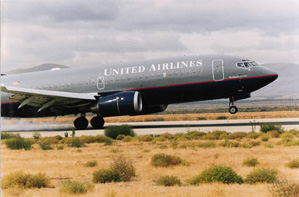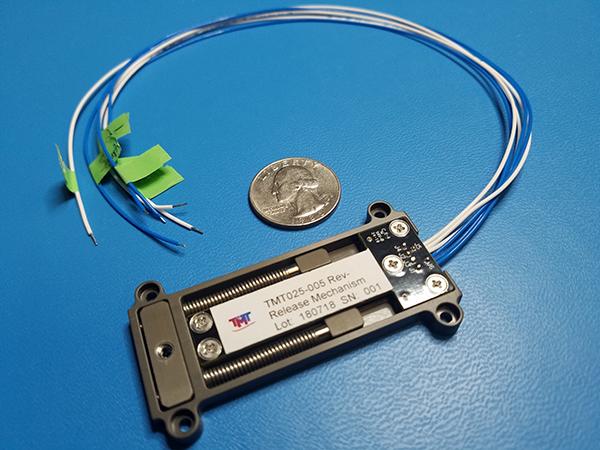Getting to the Point in Pinpoint Landing
A high-performance navigation system used primarily for automatic aircraft touchdowns promises centimeterlevel landing accuracy.
Founded by alumni of the Stanford University Department of Aeronautics and Astronautics, IntegriNautics of Palo Alto, California has commercialized a precision landing system. The work has been assisted by Langley Research Center's Small Business Technology Transfer (STTR) Program.
But the real genesis of the idea was fostered by Stanford University work on a satellite test of Einstein's General Theory of Relativity. Called Gravity Probe B, this soon-to-orbit NASA spacecraft will rely on the Global Positioning Satellite (GPS) system for both precise orbit location and spacecraft attitude determination. To do so, researchers at Stanford designed new high-performance attitude-determining hardware that used GPS signals, then flight tested the system on both spacecraft and aircraft.
It was this space project that sparked new thinking on a precision touchdown concept called the Integrity Beacon Landing System.
During a four-day period in October 1994, the idea was put to the test on Runway 35 at NASA's Crows Landing Flight Facility in California. These tests proved the validity of using what IntegriNautics terms integrity beacon "pseudolites." Compact in size, the ground-based low-power transmitters each fit entirely on a circuit board the size of a credit card. Capable of running on a 9-volt battery for over 12 hours, the inexpensive devices transmit just a few microwatts of power, emulating a GPS satellite. The beacons were situated in pairs on either side of the approach path to the runway. Power of the broadcast signals from the pseudolites was set low, measurable only inside a "bubble" emanating from the transmitter.
Using signals from orbiting GPS satellites and the ground-generated pseudolite signals, 110 autopilot-in-the-loop landings of a United Airlines Boeing 737 were completed. The integrity beacons provided consistent accuracies on the order of a few centimeters during each of the autopiloted runway touchdowns. The successful series was sponsored by the Federal Aviation Administration (FAA) as part of that agency's satellite navigation program.
Evaluation of test results provides confidence that the level of integrity yielded by satellite positioning and the ground-based monitors would improve passenger safety. High integrity of the beacon landing system translates to just one failure in a billion approaches.
The company envisions a market for precision navigation, based on levels of performance beyond those provided by the current GPS satellite system. GPS is a worldwide navigation system providing 100-meter accuracy in raw form.
IntegriNautics is now developing technology and products for a range of FAA, NASA, and Defense Department requirements, as well as commercial and international customers. Indeed, the first commercial sale of pseudolites took place in July 1997.
The first pseudolites were sold to customers for use in applications such as aircraft landing research, indoor GPS-based sensing, and robotic vehicle control. A key element of the IntegriNautics product selection is a processor that acts as a turnkey, high-performance positioning system. Several types of GPS pseudolites are presently offered. Work is continuing with Stanford through the STTR program, run through the Langley Research Center.
Built to operate indoors and outdoors, even in inclement weather, precision navigation devices are foreseen by IntegriNautics to have countless applications. Just a few potential pseudolite uses are obvious, such as commercial and general aviation aircraft, agricultural vehicles, open-pit mining, and automobiles.

Boeing 737 conducts series of automatic aircraft touchdowns relying on a new precision navigation system.













